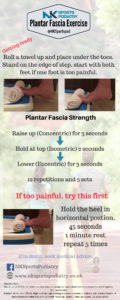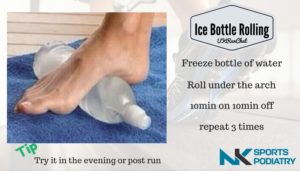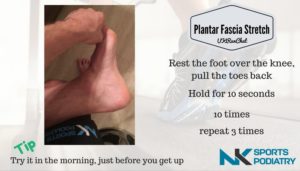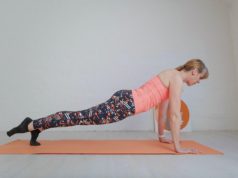Hi everyone, sorry it has been a while, lots happening my end, new business and new clinic, with some other exciting adventures in September / October time, that will be great for you runners. Watch this space.
Quick anatomy revision
The plantar fascia comes from the calf complex and Achilles tendon and starts from under the calcanium (heel bone) and goes to the metatarsal phalangeal joint (toe bones). It plays a vital role in foot function, however I will not bore you with the mechanics and functions of the plantar fascia, maybe another time.
[restrict userlevel=”subscriber”]
What is Plantar fasciitis?
Truth be told we don’t know, I am not keen on the term fasciitis as the suffix ‘itis’ means inflammation, we know inflammation is not usually present, however what to call it, is another blog on it’s own. Let’s call it Plantar fasciitis for the rest of the blog as this the most well know term. We know that the plantar fascia behaves most like a tendon from recent work by Scott Wearing and colleagues in 2006. I will put the reference at the bottom, if any eager people want to read the paper. Most of Plantar fascia patients I see in clinic have had an over use injury. Either doing too much or not being strong enough to cope with the load put through it.
How do I know I have Plantar fasciitis?
There are many causes of heel pain and some can present like plantar fasciitis, so as always, seek professional help. Some key points below on how it can present.
What can I do myself?
There are many ways to treat plantar fasciitis, however let’s take a logical evidence based approach.
The plantar fascia strengthening exercises

Ice bottle rolling

Plantar fascia stretching

Footwear
Look at using trainers with an increased drop (around the typical 12mm is fine) – just to recap the drop of the shoe is the difference between the height at the heel and the height at the front of the shoe. You also need a nice stiff sole, avoid the barefoot and low drop shoes like the Nike Free, innovates, vibrams etc. The reason for this a flexible shoe will increase the load through the plantar fascia as the toes bend upwards more, also the larger the drop, the more we can off load the calf and plantar fascia.
Running style
Avoid a forefoot landing pattern – we know this increases the load through the calf muscles and as the plantar fascia is attached to the calf, it will increase the load though the plantar fascia. You need to try and reduce the forefoot strike pattern, moving to more midfoot and keeping a vertical tibia (shin bone).
What other treatments are out there?
Taping: There are many ways, personally I use the rigid tape (not the multi coloured, stretchy kinesio tape) to off load the plantar fascia, I can run through taping in another blog. However some people can find the kinesio tape helpful.
Orthoses: Insoles can be helpful, however it is getting the right tool for the right job, everyone is different, so orthoses requirements are different, and not needed all the time.
Shock wave therapy: A newish form of treatment with growing evidence, it involves a minimum of 3 treatments and aims to help restart the healing process and is available in some NHS trusts.
Improving proximal strength: So looking at gluteals function, it is important to look from hip to toe as weakness in hip can affect foot function.
And many more.
As always, always seek medical advice and if in doubt get help. Get a diagnoses and get the right treatment plan for you.
References
Wearing, Scott C., et al. “The pathomechanics of plantar fasciitis.” Sports Medicine 36.7 (2006): 585-611[/restrict]






